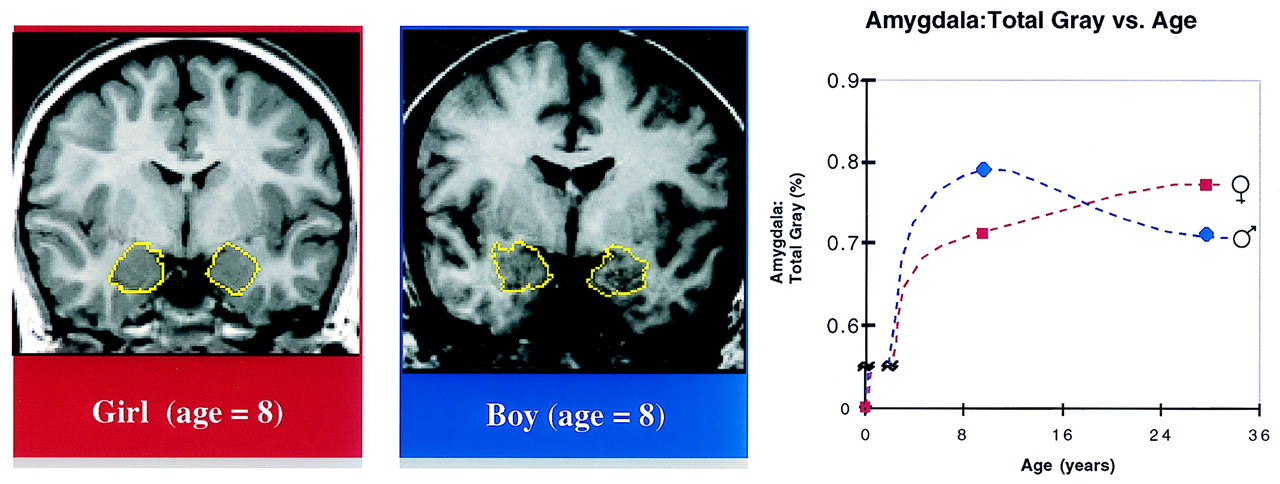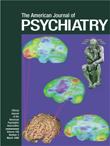The size of the human
brain is established at a young age, much earlier than motor, psychological, or cognitive maturity. Whole brain volume is at 95% of its adult size by 4 years of age. However, the brain continues to develop well through the teen years, including alteration of the relative volume of brain regions, neuronal number, synaptic connections, and neurochemistry. A number of these changes are sex specific. In the adult human brain, although the overall cerebral size is larger in men, several regions are proportionately larger in women, including the caudate nucleus, hippocampus, some prefrontal cortical areas, the superior temporal gyrus, and some white matter structures such as the anterior commissure. Regions proportionately larger in the adult male brain include the hypothalamus, stria terminalis, cerebral ventricles, and the splenium and genu of the corpus callosum. Furthermore, even for structures that reach similar volumes in men and women, the rate of structural change differs by sex. For example, the prepubertal volume of cortical gray matter is greater than its adult size, particularly in boys. In contrast, prepubertal white matter volume develops faster in girls than in boys. Sexual brain dimorphism results, in part, from hormones that affect neuronal formation and elimination and glial development. Hormones have both permanent (i.e., organizational) and acute reversible (i.e., activational) effects on the brain. The organizational actions are hardwired during critical periods of development by genomic and nongenomic events. The activational actions selectively potentiate neural circuit functions established during development. It is important to note that sexual differentiation of the brain begins during the second trimester of gestation and extends through early postnatal life to the onset of puberty.
The above image schematically illustrates sex differences in the structural development of the amygdala. The amygdala is larger, relative to total gray matter, in boys by age 9 than its adult size but is similar to its adult size, relative to total gray matter, by age 9 in girls. In contrast, in adulthood, the amygdala in women comprises a greater percentage of the volume of total gray matter than it does in men. In addition, other brain regions show different developmental patterns in boys and girls (e.g., the hippocampus, caudate, pallidum, dorsolateral and orbital frontal cortices, and parahippocampal white matter). This may result in differential consequences for men and women in the prevalence and expression of psychiatric disorders with neurodevelopmental origins, depending on the timing of the putative insults to these brain regions.


